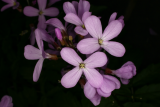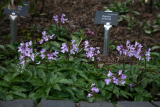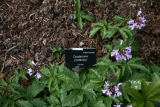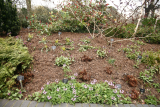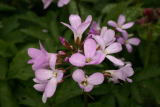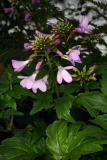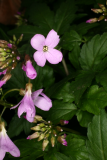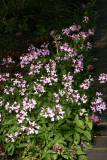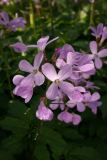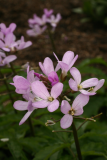Listed as a 'simple' for making medicine.
Royal College of Physicians Edinburgh, (1817). Pharmacopoeia Collegii Regii Medicorum Edinburghensis. Edinburgh, Bell & Bradfute; and others. p.9
Gerard says watercress (Nasturtium officinale), garden cress (Lepidium sativum), brooklime (Veronica beccabunga), and cardamine (bitter cress, cuckoo flower, Cardamine pratensis and other ) may be as good as Cochlearia in treating scurvy.
Gerard, J. (1975). The Herbal or General History of Plants. New York: Fascimile Dover Publications Inc .
Nasturtium pratensis majus; Cardamine latifolia, Great Ladies Smocks or cresses.
Parkinson, John (1640) 'Theatrum Botanicum' London, Thomas Cotes p.825
Now growing as Cardamine quinquefolia. Please see record.
Used by country folk to decorate their gardens, not much used in sauces, sallets or in Physick, but used for Scorbute or scurvy [not synonymous with modern use of the word, implying Vitamin C deficiency].
Parkinson, John (1640) 'Theatrum Botanicum' London, Thomas Cotes p.825
"... resembles Water Cresses, not differing much from it in its Virtues, being both heating, warming, and good for the Scurvy. It may, where Water-Cresses cannot be had, supply their Place, tho' it is but seldom used in the Shops."
James, R. (1752). Pharmacopoeia Universalis or a New Universal Dispensatory 2nd edit.,. London, J. Hodges. p.176
